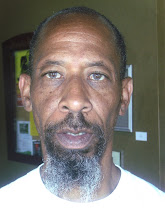Minorities and Homelessness
Published by the National Coalition for the Homeless, July 2009.
BACKGROUND
Homelessness emerged as a national issue in the1870’s (Kusmer, 2002). At that time in American history, African-Americans made up less than 10% of the population and although there were no national figures documenting the demography of the homeless population, some sources suggest that African-Americans represented a very small segment of the homeless population. As a matter of fact, in the 1950s and 1960s, the typical person experiencing homelessness was white, male, and in his 50s (Kusmer, 2002).
Since that time, however, the scope and demographic makeup of the problem have changed dramatically. Not only do families with children now comprise 41% of the homeless population (National Alliance to End Homelessness, 2006), but 42% of the population is African American. The composition of the average homeless family is a single parent household headed by an African-American female (U.S. Conference of Mayors, 2004).
DEMOGRAPHICS AND TRENDS
- People of color – particularly African-Americans – are a minority that is particularly overrepresented. According the PBS Homeless Fact and Figures ’07, 41% are non-Hispanic whites (compared to 76% of the general population), 40% are African Americans (compared to 11% of the general population) 11% are Hispanic (compared to 9% of the general population) and 8% percent are Native American (compared to 1% of the general population).
- Like the total U.S. population, though, the ethnic makeup of homeless populations varies according to geographic location. For example,people experiencing homelessness in rural areas are more likely to be white, female, married, currently working, homeless for the first time, and homeless for a shorter period of time (Fisher, 2005); homelessness among Native Americans and migrant workers is also largely a rural phenomenon.
- Many other urban communities cite similar or higher numbers. The Chicago Coalition for the Homeless reports that 77% of its total homeless population is African-American.
- The disparities between ethnicities in the U.S. population and the homeless population are striking. In 2007, the homeless population was 47% African-American, though African-American people made up only 12% U.S. adult population. The homeless population was only 35% white, though white people made up about 76% of the U.S. population (U.S. Census Bureau, 2003; U.S. Conference of Mayors, 2007).
- Veterans make up approximately one-third of the male homeless population. Among this population about 46% are white, 56% are African-American or Latino (Department of Veteran Affairs, 2005).
- The sexual orientation of homeless persons is not often measured, but the National Network of Runaway and Youth Services estimates that about 6% of homeless adolescents are gay or lesbian. Studies assessing sexual orientations of homeless adolescents have revealed rates ranging from 11% to 35% (American Journal of Public Health, 2002). These youths face considerable risk of violence and abuse while homeless.

No comments:
Post a Comment